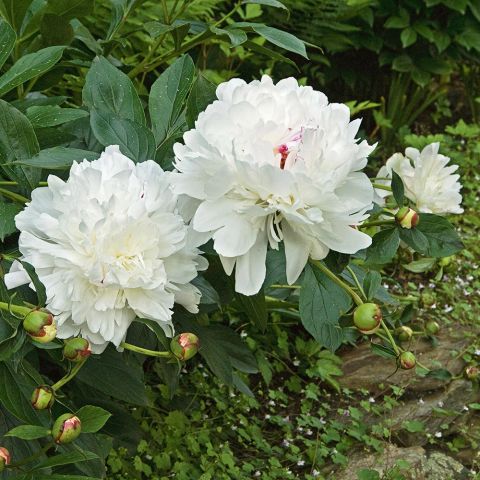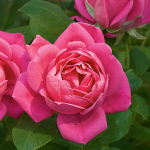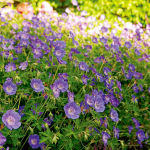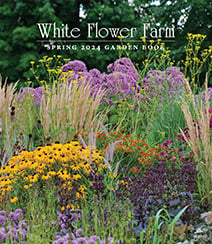Peony Care
Latin Name Pronunciation: pay-oh'-nee-ah
No garden is complete without Peonies, which are covered in mid- to late spring with sumptuous flowers in a variety of forms, from delicate Singles to petal-packed Doubles. These carefree, long-lived plants (some live to over 100 years old) are classic elements of borders and beds. When Peony blossoms subside, their cut-leaf foliage and mounding forms continue to add beauty and structure to the garden.
Peonies are easy to grow and will reward you with armfuls of cut flowers and a splendid show in the garden. They make striking specimen plants, play nicely with other perennials in the garden, and are ideal for bordering a walk or driveway. Early-, mid- and late-blooming varieties are available to extend the flowering season, some of which are fragrant. Peonies are grown in Zones 3 to 8; in the South, they will flower in Alabama but the limit appears to be cooler areas of Zone 8. Southern gardeners should choose early-flowering singles for the best success.
Growing Peonies (Paeonia)
Light/Watering: Plant Herbaceous Peonies in full sun except in the South and the warmest parts of the West, where afternoon shade is appreciated and will help the flowers last longer on the plant. An inch of water a week throughout the growing season is recommended.
Fertilizer/Soil and pH: Well-drained soil rich in organic matter is desirable. If your soil is extremely acid, add a few handfuls of lime at planting time. Plant the roots with the eyes (the pink or white buds at the top of the roots) pointing up and cover with one to two inches of soil in the North and no more than one inch in the South. (Please note: If the eyes are set deeper than recommended, plants may not bloom. For this reason, do not mulch over the crowns.) Don't be surprised if there are few or no flowers the first spring after planting; plants generally take a few years to settle in and bloom heavily. Peonies respond well to an annual sidedressing of one inch of compost or aged manure; no other fertilization is necessary.
Staking: It is best to stake all varieties of Peonies and this must be done early in the season. The plants are best supported by metal rings which can be purchased at most garden centers. Set the rings in place when plants are a few inches tall and guide the stems through the ring as they grow. The growth will eventually hide the support.
Pests/Diseases: Few insect pests bother Herbaceous Peonies, but a fungal disease called botrytis may be a problem, especially in very wet seasons. The stems of Peonies develop cankers or blacken at the base and fall over or simply wilt. Leaves may show black or brown patches and buds may turn brown and fail to open. Good culture and sanitation in the garden can help prevent or correct these problems. Plants need good drainage and air circulation, so do not crowd. Remove any affected foliage at the first sign of disease and deadhead religiously, removing all flower parts and petals from the garden. Cut off all foliage just below soil level after a killing frost in the fall and remove it and any debris from the area -- do not compost. If botrytis was present the previous spring, add a shallow layer of sand around the plants and crowns and spray newly emerging shoots with Bordeaux mix or lime sulfur following label directions. Fungal spores overwinter at the base of the plants, and spring rains then splash the spores up onto the new shoots. Removing any debris and old foliage and covering the soil with sand helps prevent reinfection.
Another blight known as phytophthora may also appear, but the two diseases are hard to tell apart. Take a sample to your USDA Cooperative Extension Service agent or a specialist if you suspect phytophthora, as this disease is usually fatal to the plant and infected plants should be dug up and destroyed, and the soil replaced before replanting.
Peonies can be susceptible to powdery mildew in summer. The white, powdery mildew fungus covers the leaves to varying degrees, but seems to have little effect on the vigor of the plant. This can be avoided or diminished by planting in full sun and providing ample air circulation around the plants.
Cutting Flower Buds: To enjoy the blooms of Herbaceous Peonies later in the summer, cut the buds just before they open on stems about 6 inches long. Lightly wet the inside of a large, resealable plastic bag, and place the buds inside. Close the bag and place it in your refrigerator (not the freezer). Later take out the buds you need and float them in a shallow bowl of water. When bud is about ⅓ open, lift it, then cut the stem to 1½ inches long and refloat the bud. You may see ants crawling on the unopened buds, but don't worry, they won't hurt your Peonies. They just like the sticky substance that covers the buds.
Reflowering: Many peony bush varieties make several side buds that will open after the terminal bloom flowers, so deadheading is beneficial. After each flower is finished, cut the stem underneath the old bloom, leaving the foliage alone. If exhibition-sized flowers are desired, remove the side buds as they form and leave only the terminal bud.
Dividing/Transplanting: Generally Herbaceous Peonies do not need dividing and some resent it. However, if you must move an established plant you need to divide it before replanting. Do this in the fall, after all foliage has died back completely. Each division should have three to five eyes, and it will usually take a couple of years for the new plants to flower.
Calendar of Care
Early Spring: Water plantings well if spring rains don't do it for you. Side dress plants with compost or aged manure. If botrytis blight was present the previous season, cover ground around plant with a thin (one-quarter inch) layer of sand and spray new shoots with Bordeaux mix or lime sulphur. Set stakes or other supports in place now.
Mid-Spring: Watch for signs of botrytis blight and treat as needed, removing any diseased tissue immediately. Train through plant supports as plants grow. Remove side buds if exhibition-size blooms are desired.
Late Spring: Deadhead Peonies religiously and remove all fallen petals or blooms from the garden.
Summer: Herbaceous Peonies do best with an inch of water a week.
Fall: Cut stems of Herbaceous Peonies back to soil level and remove from the area to discourage overwintering of pests. Dig and divide plants now if necessary. Mulch new plantings with evergreen boughs or salt marsh hay after the ground freezes.
Frequently Asked Questions
What’s the difference between Herbaceous Peonies and Tree Peonies?
Herbaceous Peonies naturally die back to the ground in fall. Tree Peonies, which aren’t “trees” but shrubs, have a woody structure that remains above ground through the plant’s dormant period. The woody trunk and branches should never be pruned to the ground.
How deep should Peonies be planted?
Herbaceous Peonies that are planted too deep will fail to bloom. If you are planting a potted Peony (one that has top growth), set it in a hole so it sits at the same level it’s at in the pot. (In other words, do not sink the plant so deeply that soil must be mounded against the stems.) If you’re planting a bareroot Peony (a bareroot is just what it sounds like: a section of the plant’s rootstock with bare roots and “eyes” or growing buds), dig a shallow hole and arrange the crown so the growing buds or “eyes” are facing upward and are covered by only 1-2" of soil in the North, barely 1" in the South. (See diagram below for how to plant a bareroot Herbaceous Peony.)

When should I stake my Peonies?
Double-flowered Peonies (which have layers of petals so the blossoms tend to be fuller and heavier than Singles) generally need staking. Set the stakes and string in place when plants are a few inches tall, so they’ll grow into and hide the framework.
Are ants bad for my Peonies?
As Peonies produce flower buds, you may see ants crawling on the unopened buds. The ants do no harm. They simply like a sticky substance that covers the buds.What if I see black leaves on my Peony plant?
In a wet season, botrytis, a type of fungal disease, may blacken the flower buds and cause stems or leaves to wilt. Promptly remove and dispose of any infected plant parts. Clean up all foliage in the fall and place in the trash, not the compost. (Ridding your property of any diseased foliage will help prevent the disease from wintering over and returning the following year.)What are good Peony companion plants?
Peonies flower with Roses and Clematis and are lovely with many other perennials such as Baptisia, Nepeta and Siberian Irises. Be sure to leave room around the plants for air circulation. White-flowered Peonies are entrancing against a background of evergreens. Spring-flowering bulbs such as Crocus vernus or Scilla siberica create a pleasing color contrast at the feet of emerging Herbaceous Peonies stems, which are often reddish.Peony Videos
How to Grow Bareroot Peonies
Learn about Old-time Peony Collection from White Flower Farm
Old-time Peony Collection from White Flower Farm Transcript
When you purchase Old-Time Peony Collection, there are a few tips for peony growing that will help you have success with your collection. First of all, when you plant the three different colors, plant them in a triangle and make sure you give each plant at least 2-3’ space because air circulation is very important for peonies.
As you can see, over the years they get larger and they’re prone to fungal disease if they don’t get enough air circulation. So, plant them in full sun, give them plenty of space, and make sure that your soil has a little bit of lime, if the soil is acidic. Bare root peonies take a while to establish, so don’t expect the full display the first year after you plant them; give them some time. The great thing about peonies is, once they’re established, they’ll flower and be beautiful for you every year.
Another great tip for growing peonies is to make sure you keep your garden clean. Make sure you don’t plant your peonies too deep or they won’t flower. They make beautiful cut flowers, and the foliage is glossy and green. Your fragrant double peonies will come back every year and you’ll be amazed at how beautiful and big your plants become.
Peonies We Offer:
 Peony 'Festiva Maxima'
Peony 'Festiva Maxima'
Peony Bouquets:
Peony Flower Delivery & Shipping Details
There is a limited delivery window for our Peony bouquets. Shipment begins in early May and continues until the growing season ends, usually in mid June.
Peony Companions:








